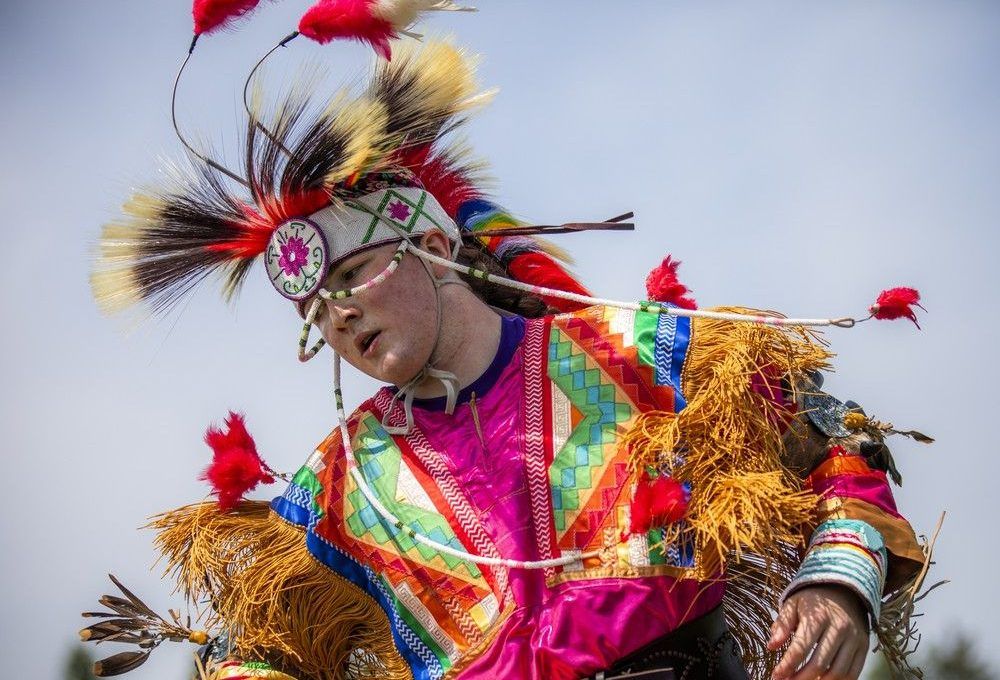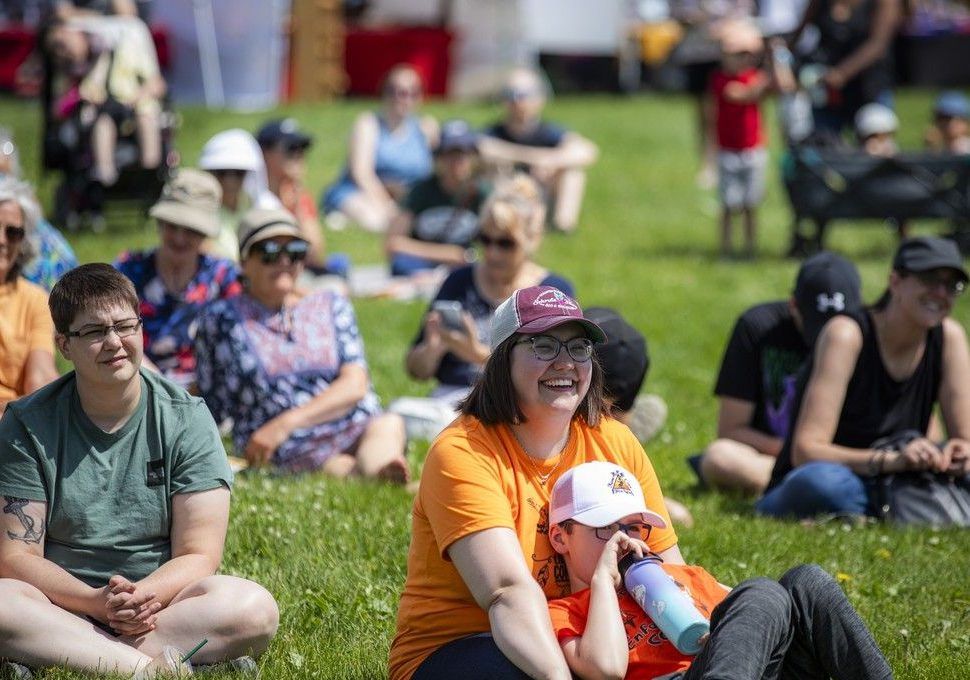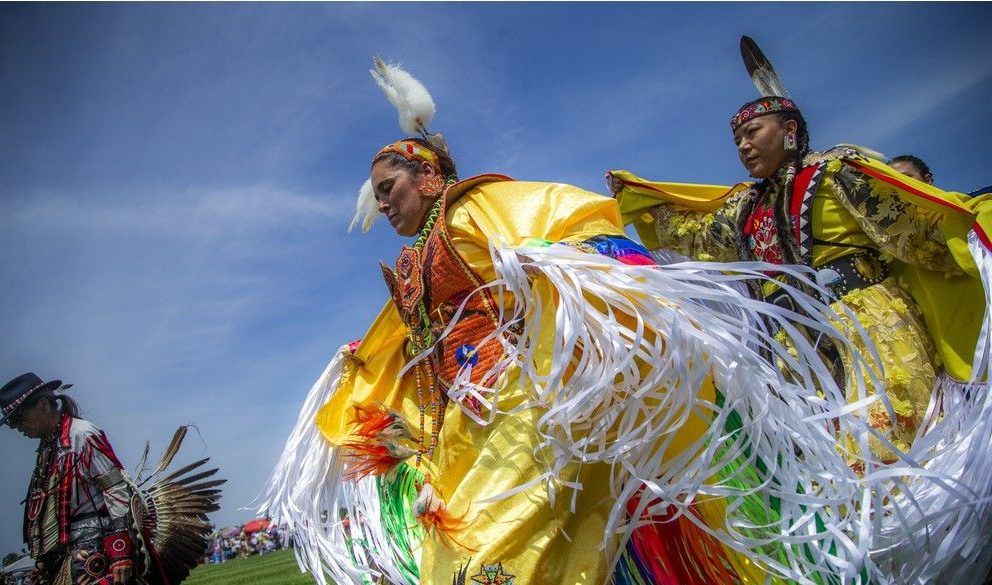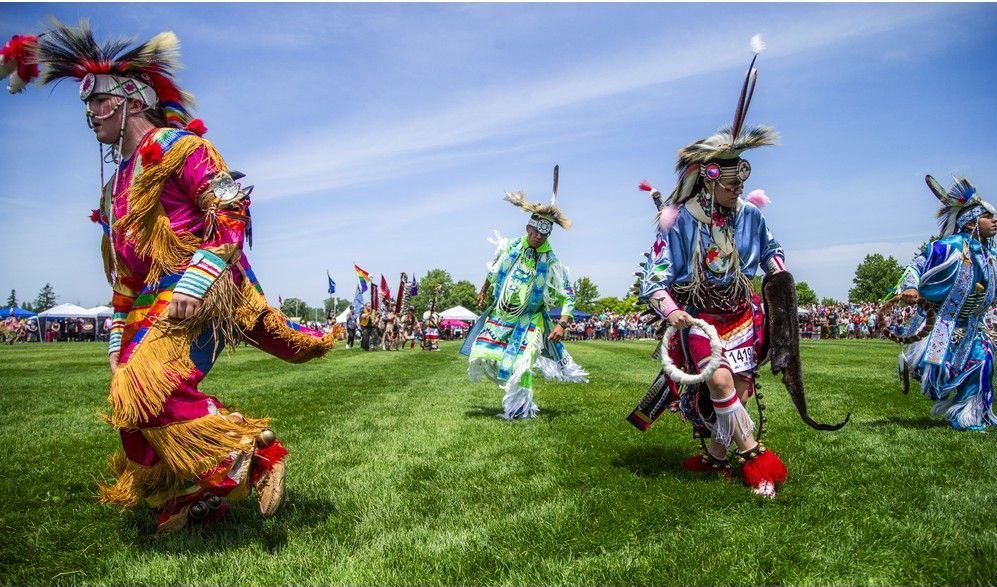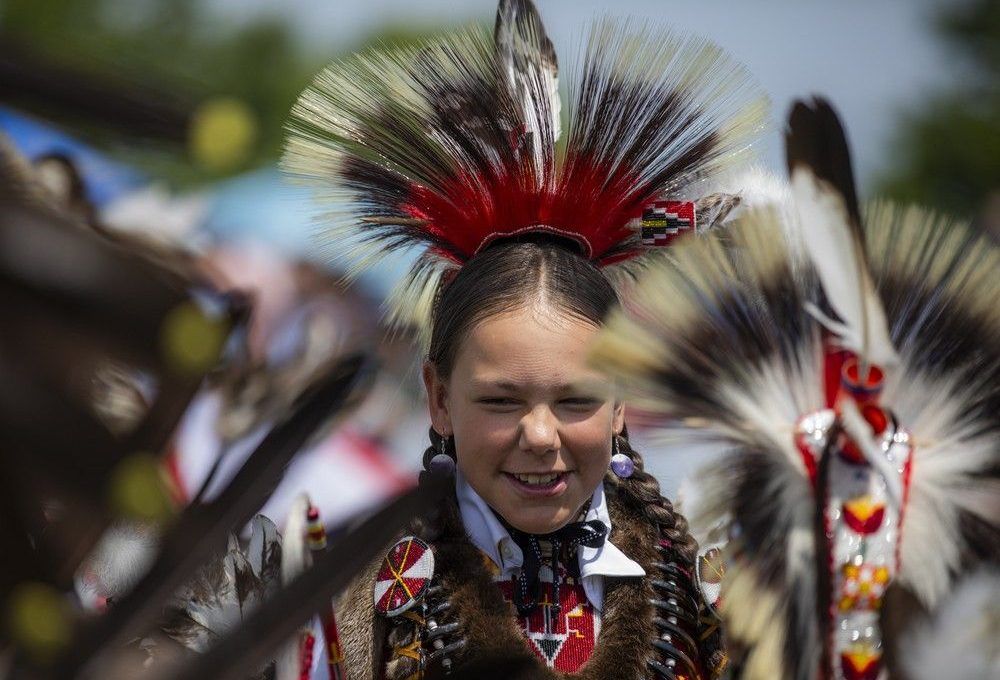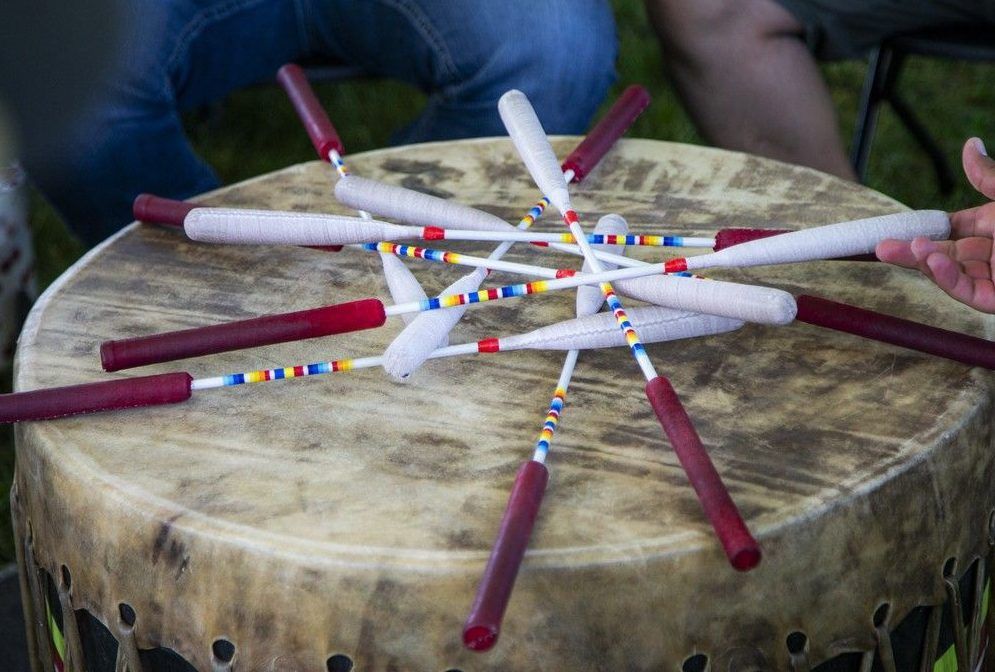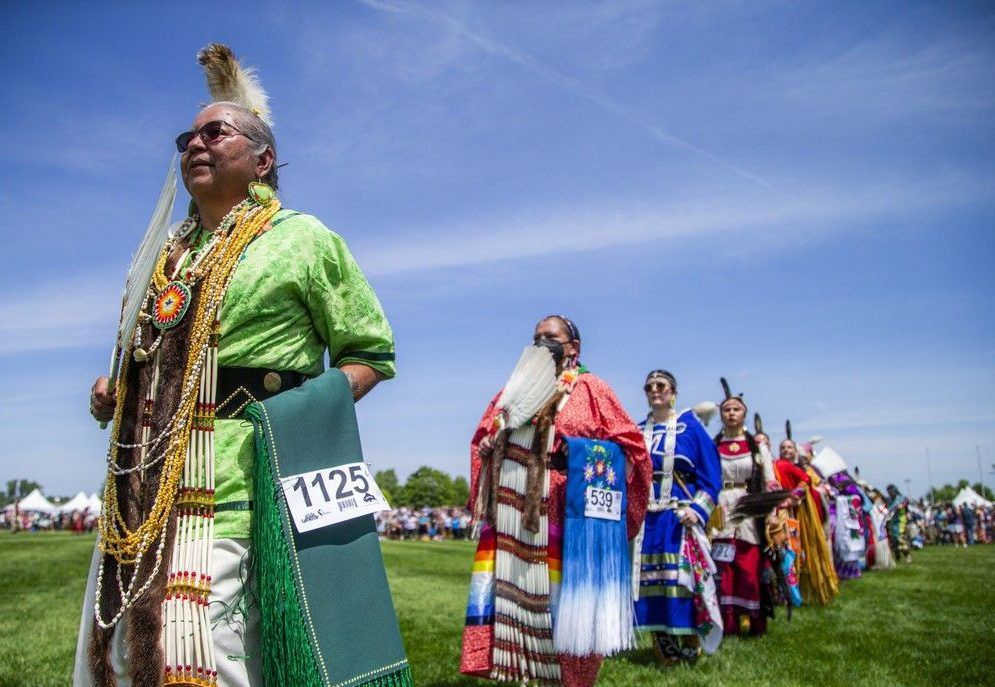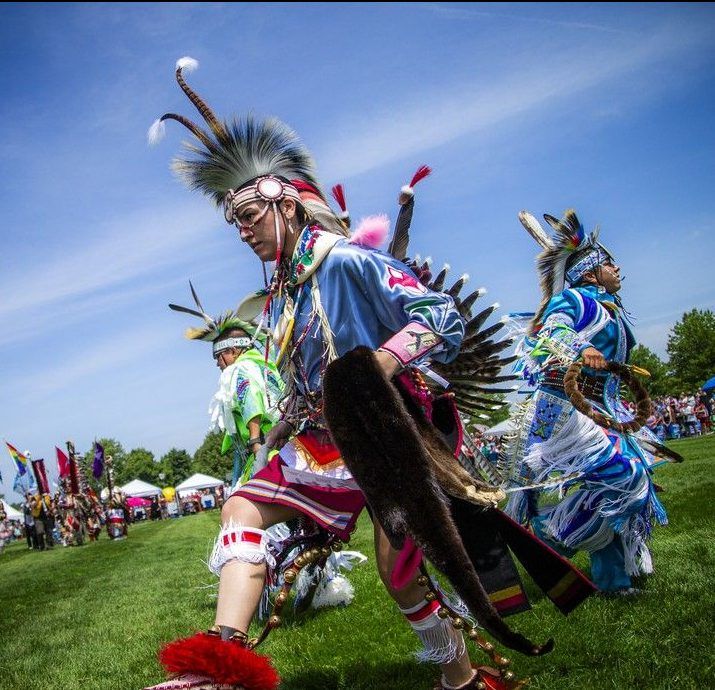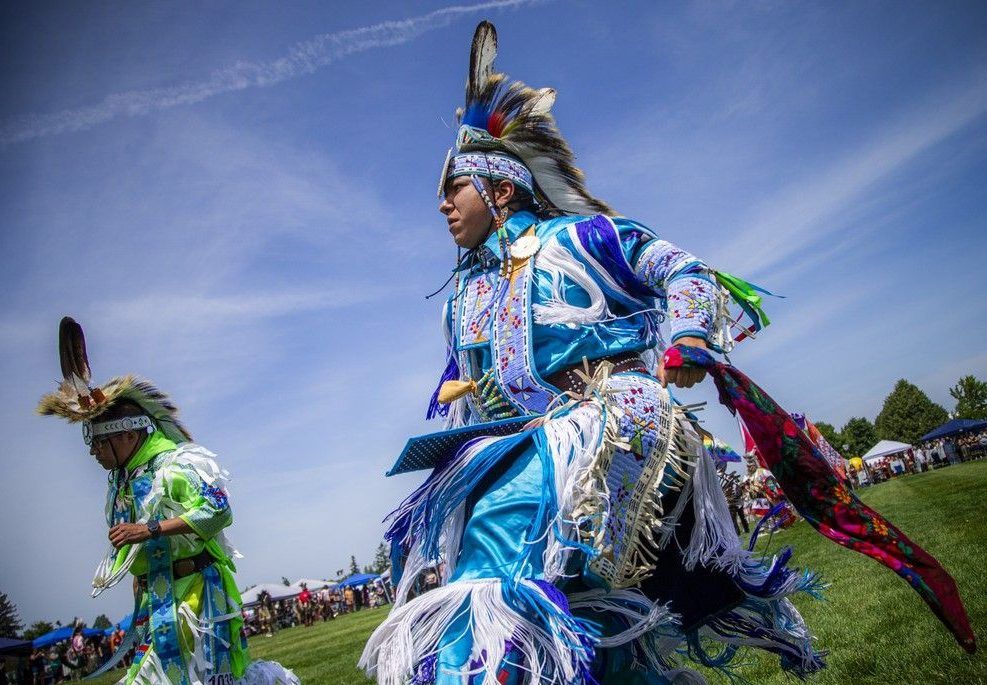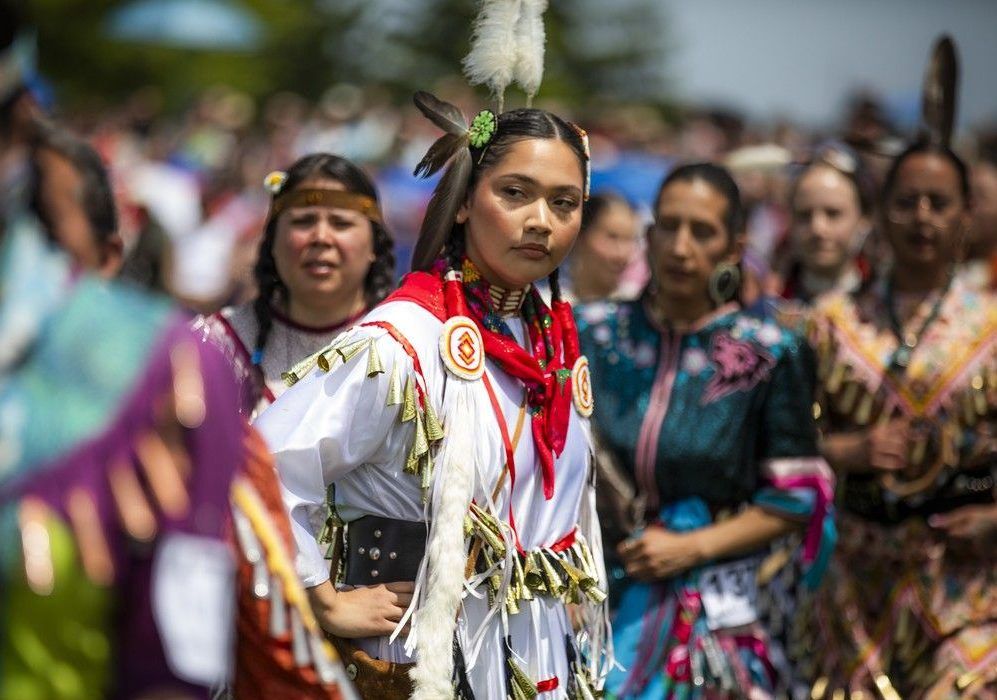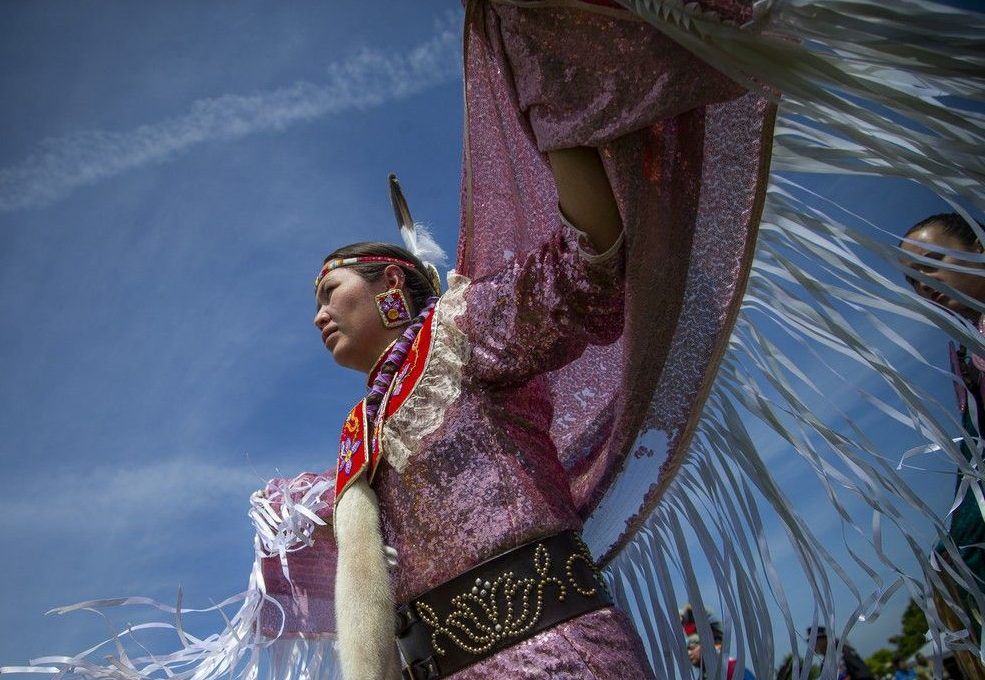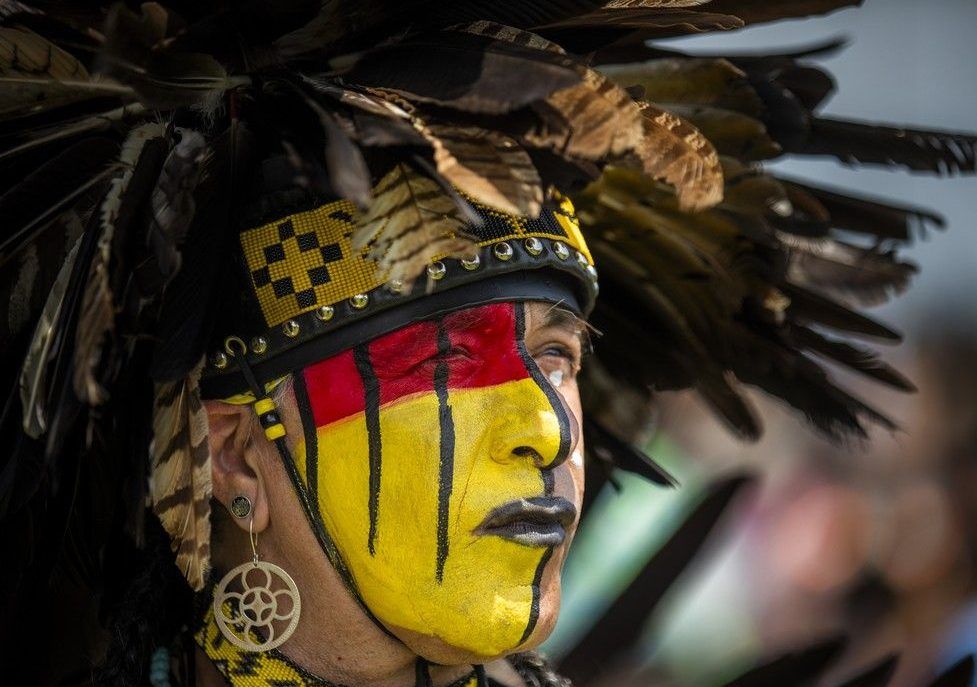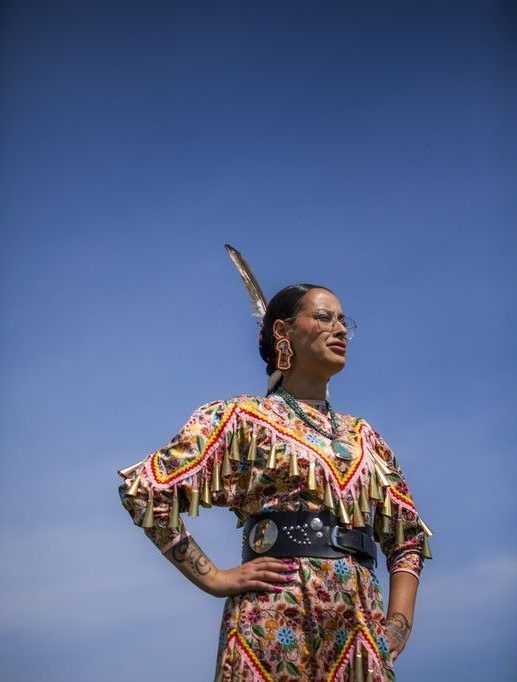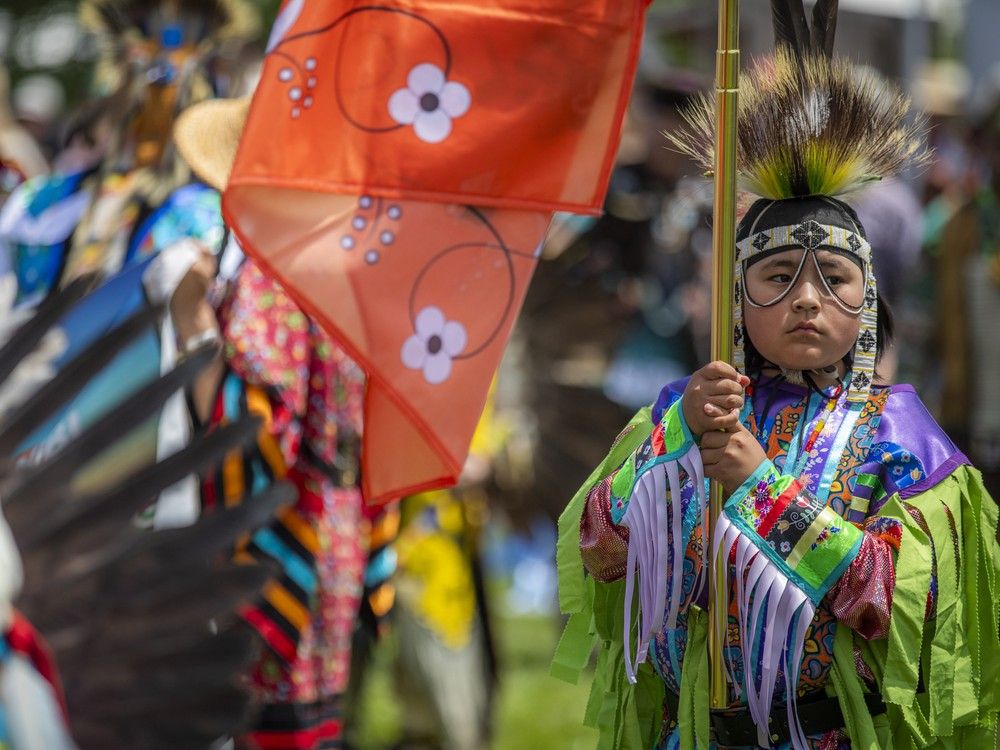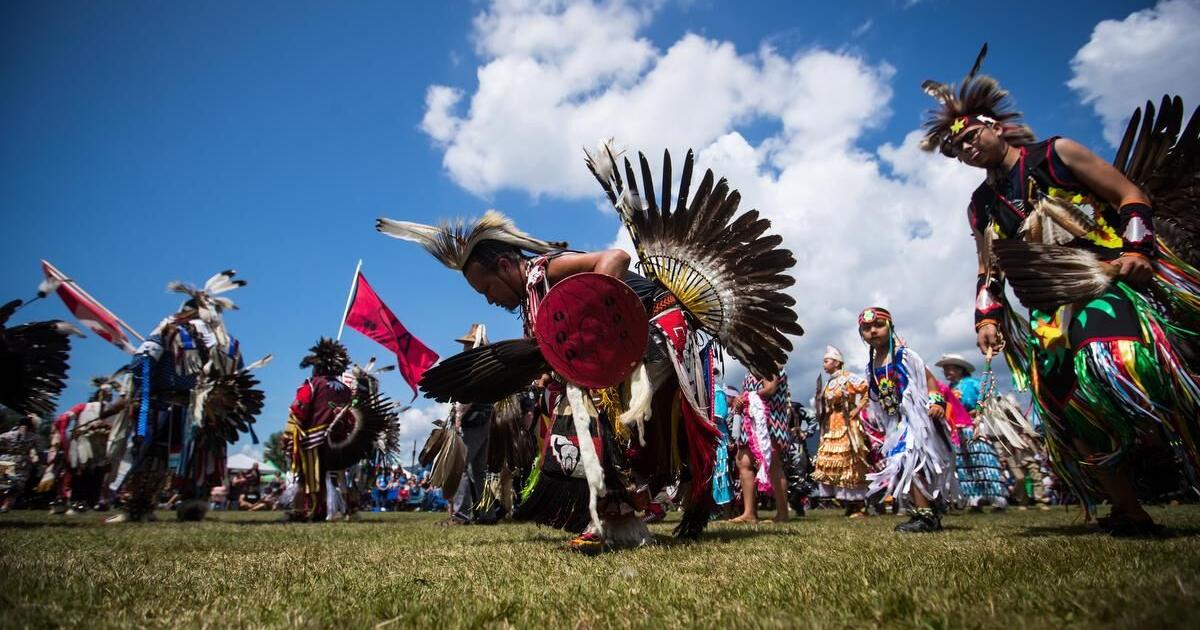Thousands of people gathered Saturday at the Indigenous Summer Solstice Festival in Ottawa to celebrate the heritage, culture and resilience of First Nations, Métis and Inuit peoples.
The event attracted Indigenous people from a variety of nations to Wesley Clover Parks to mark the summer solstice, a time of cultural significance and celebration for many cultures. It also coincided with National Indigenous Peoples Day, which recognized the history, achievements and diversity of First Nations, Métis and Inuit people.
The Ottawa festival was previously held at Madahoki Farms on West Hunt Club Road, but organizers decided to relocate to better accommodate the large number of attendees.
Hundreds of Indigenous men, women and youth in colourful regalia participated in the grand entry Saturday afternoon to kickstart the weekend-long dance competition for dancers and drummers of all ages. Others wore ribbon skirts and traditional clothing on the festival grounds, chatting with their friends and family while browsing and shopping at Indigenous-owned businesses.
Meanwhile, Ottawa residents and visitors attended workshops to learn how to create medicinal candles and Cree birch bark art, while others watched performances by Indigenous artists at the celebration stage.
“I’m excited. I’m very happy to be here,” said Kahentisa ‘Salfred of Kahnawake Mohawk Nation, wearing a pink jingle dress and competing in the dance competition.
“I wear all pink because I am very much a pink girly girl. I have my jingle dress on today, and everything except the dress was made by me.”
Tasha Simon is an Algonquin Anishinaabekwe and a member of Kebaowek First Nation. She is also the owner of Waagoshens Beads, which she started after coming to Ottawa for university and deciding to stay in the city to do her beadwork.
“This is my first time being a vendor at a powwow,” Simon said.
“It’s been a great experience so far. The atmosphere is amazing. Everyone is very respectful and engaging. Business has been good throughout the day and I’m starting to run out of some things already.”
However, Simon urged visitors to be more mindful about the amount of time and craftsmanship needed to produce intricate beadwork.
“I think it’s really important to let people know with any type of Indigenous vendors and their craft and how much work actually goes into it and how it’s a tradition that’s been passed down from generations, and the materials as well,” she said.
“I want people to be mindful and respectful of that … If it’s not in your price range at the moment, that’s okay. You can still admire the artwork and appreciate their skill.”
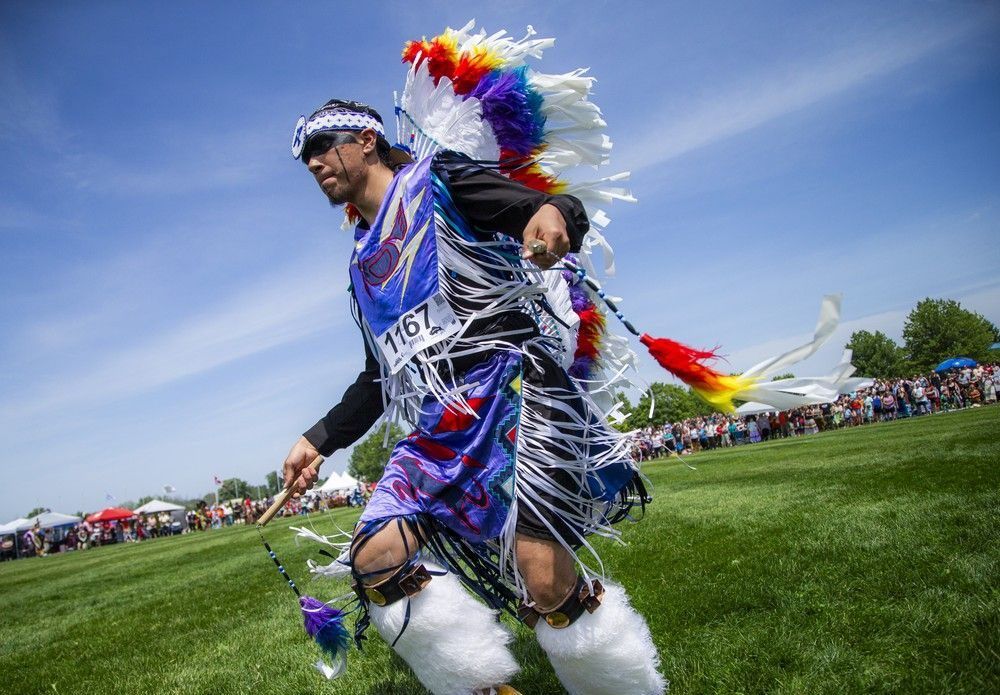
Advocates at festival aim to empower Indigenous youth and joy
The Indigenous Summer Solstice Festival is also an opportunity for Indigenous youth to reconnect with their culture and to meet other Indigenous youth as well as a time to celebrate and promote Indigenous wellbeing and mental health.
Blaine Wolfe is Ojibwe from Curve Lake First Nation and the engagement co-lead for Aanish Naa Gegii: the Children’s Health and Well-being Measure (ACHWM), an initiative that measures the wellbeing of Indigenous youth between the ages of eight and 18.
The ACHWM offers a tablet-based survey providing Indigenous communities and organizations with an overview of the wellbeing and health of children. Indigenous youth are asked 62 culturally-relevant questions where they can self-report and assess their spiritual, emotional, physical and mental wellbeing. A visual balance chart will be created so each child can go over their needs with a local health-care worker.
Wolfe said the data obtained from this survey could be used to identify areas where more services and supports were needed.
“We really, really want to make sure that we’re not just giving children a voice, but also listening to that voice as well. So many times adults perceive children’s mental health without actually asking them, and it’s important to really let the children lead,” he said.
“We’re not just talking about scary things like suicides, but we are addressing them if they do come up. We’re talking about things that are going well in their life, too. We want to make sure that we’re really celebrating those kids that are doing well.”
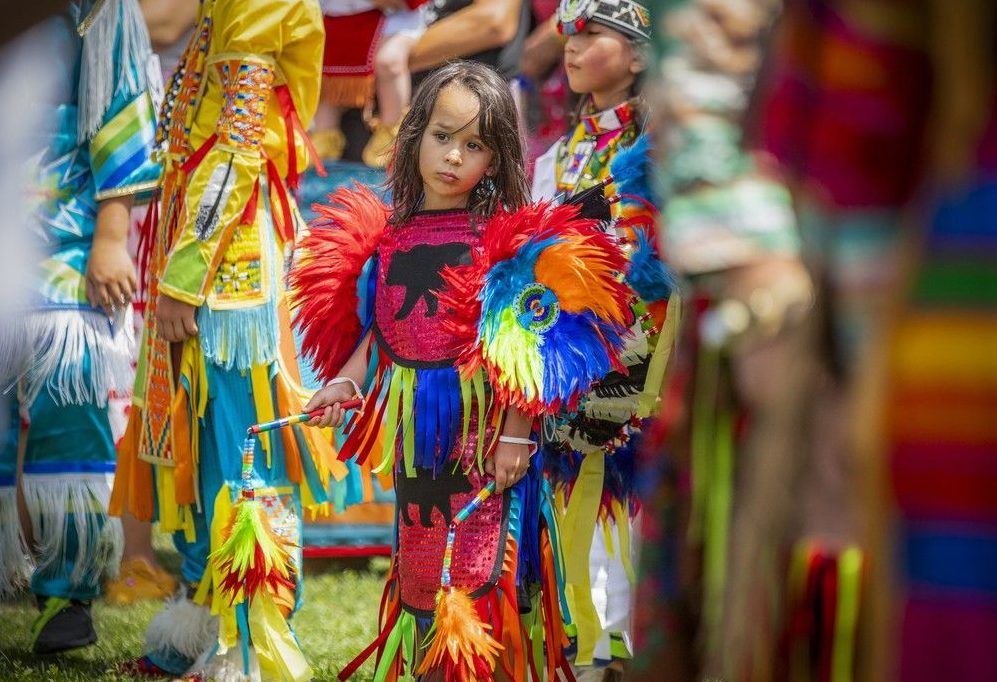
Wolfe said it was important for schools and workplaces to incorporate Indigenous knowledge and ways of being into their workflows. This is especially important in health care, where Indigenous people were disproportionately harmed, he said.
“It’s really, really important that, when we’re talking about change, when we’re talking about supporting mental health, that we are grounded in the fact that we live in a colonial system that was designed to oppress us and to push back is to assert our self-determination and self-governance,” he said.
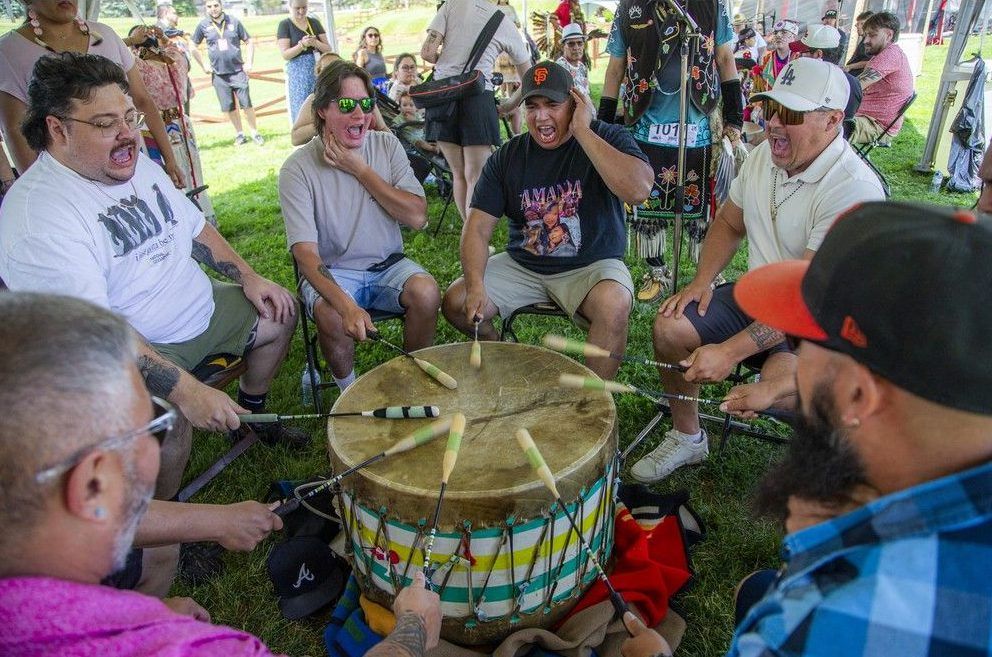
Marie-Claude Charland is the Wasa-Nabin Coordinator at the Wabano Centre for Aboriginal Health, where she works with a lot of Indigenous teenagers.
She emphasized the importance of funding resources in schools to support Indigenous students and to provide training opportunities for educators and staff. Many Indigenous youth still face racism and discrimination in schools from peers and educators, she said.
“Stop cutting back. Stop taking money away. Right now at the Ottawa Carleton District School Board they’re talking about cutting back instead of at least maintaining what is already insufficient,” Charland said.
“Everyone should feel like they have a place in the world, that they belong, that they can be who they are as children. Don’t be afraid to be yourself. Be proud of who you are. Be proud of your ancestors. They’re walking with you every day.”
‘Salfred has a similar message for Indigenous youth looking to reconnect with their heritage and culture.
“Just get out there and don’t care if anyone else is judging you. I clearly don’t look like the most native person. I’ve got red hair and pale skin and I don’t give a s–t. Just go do it,” she said with a laugh.
